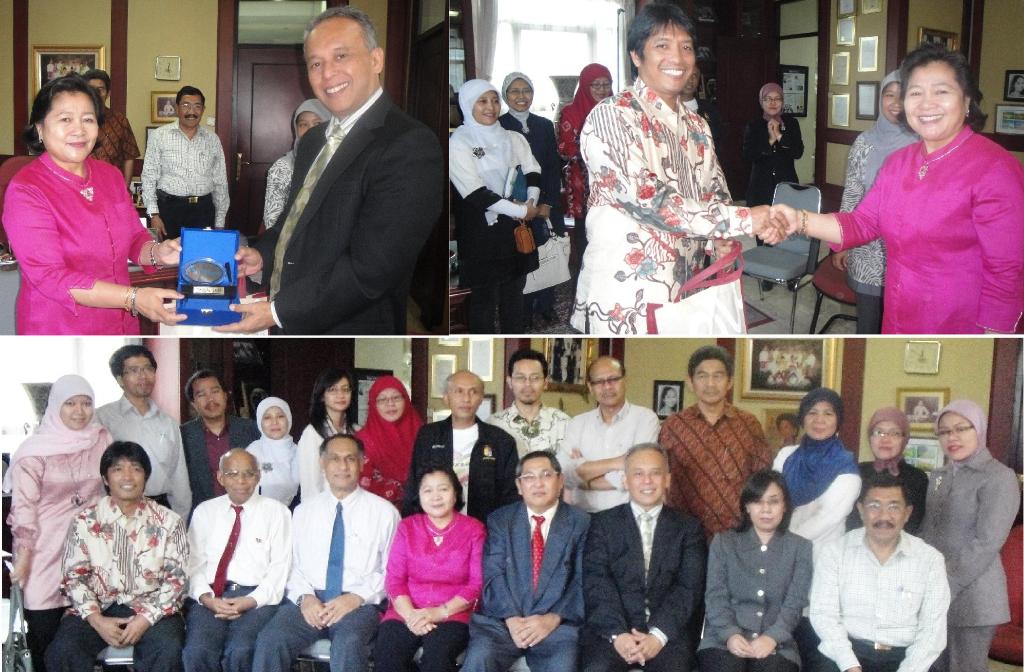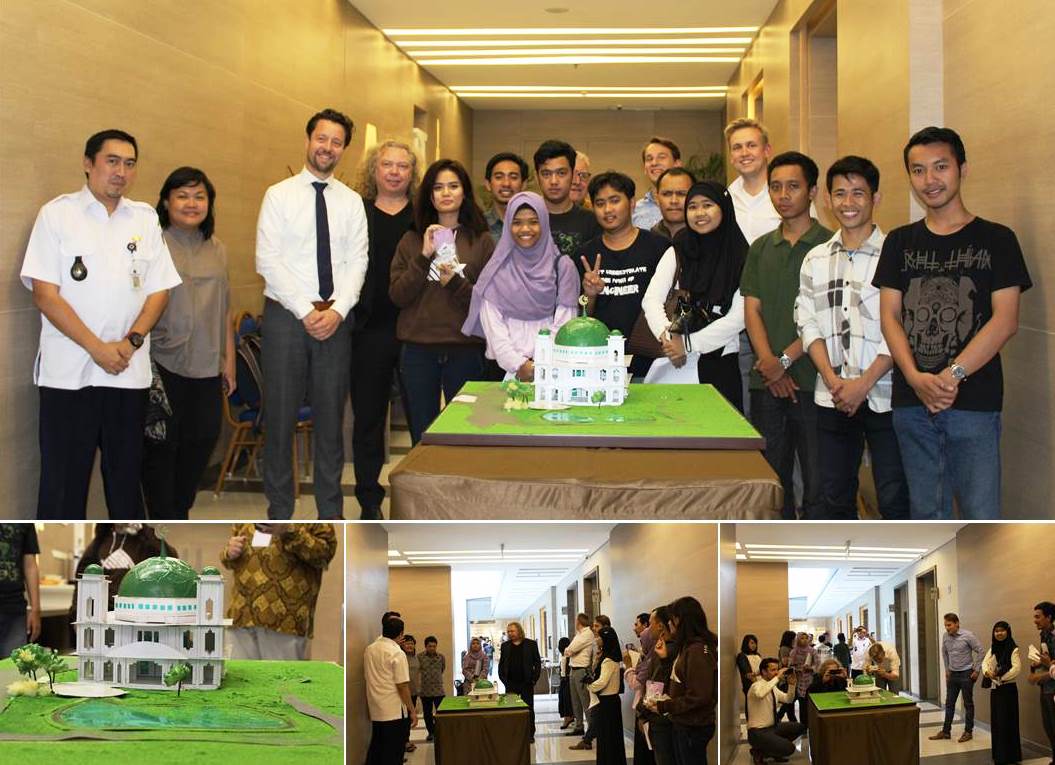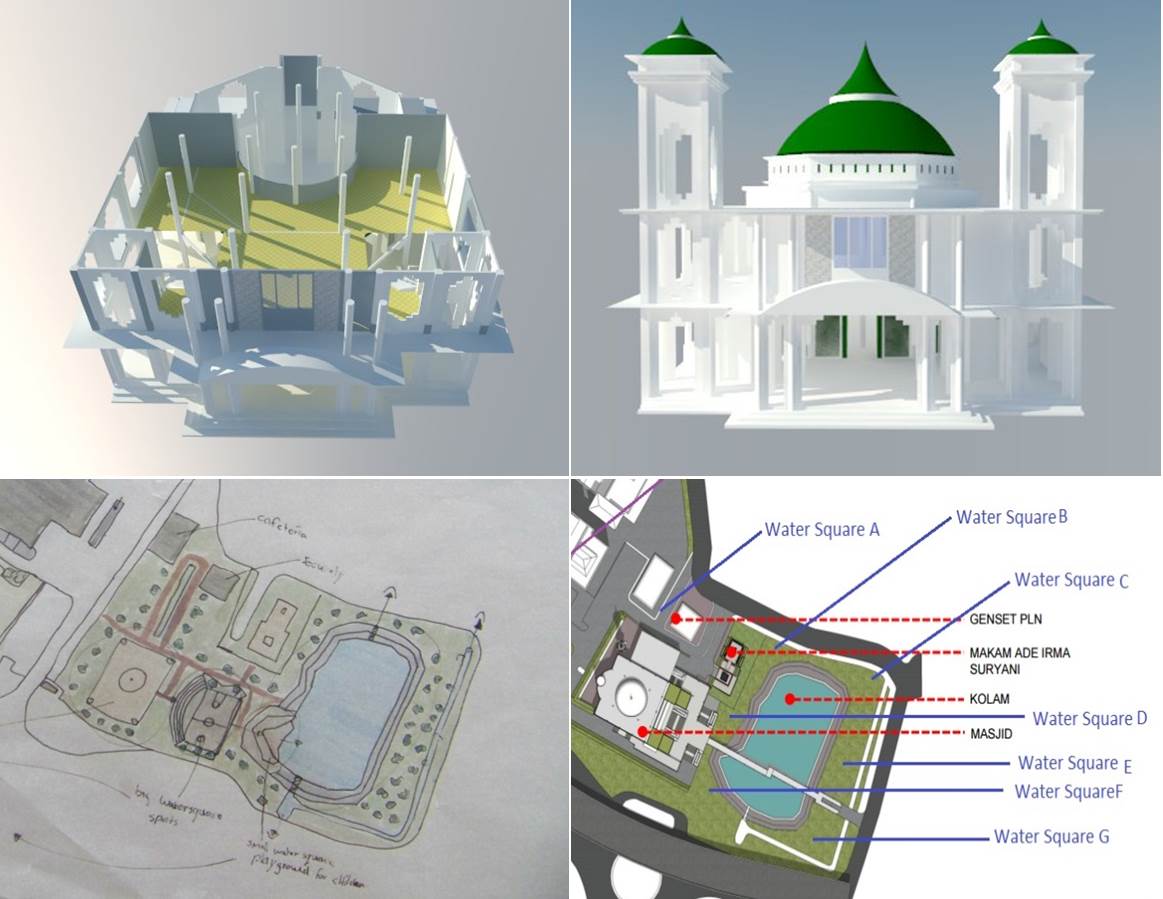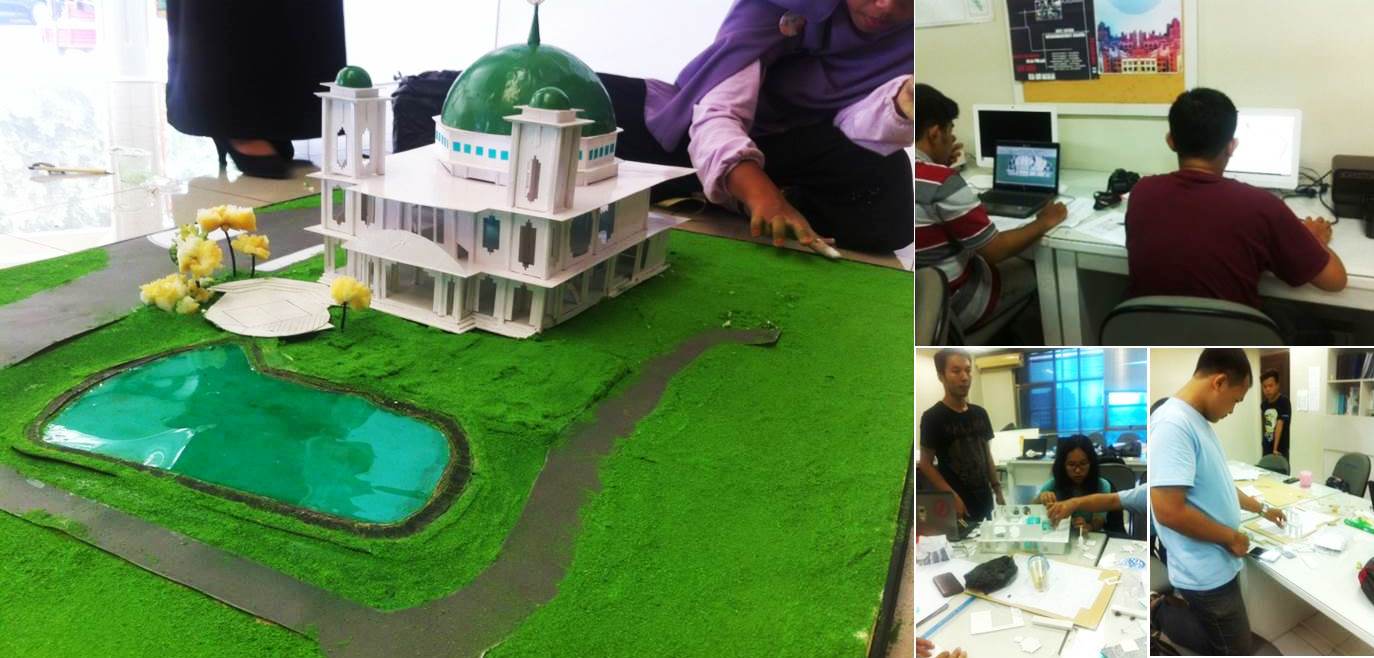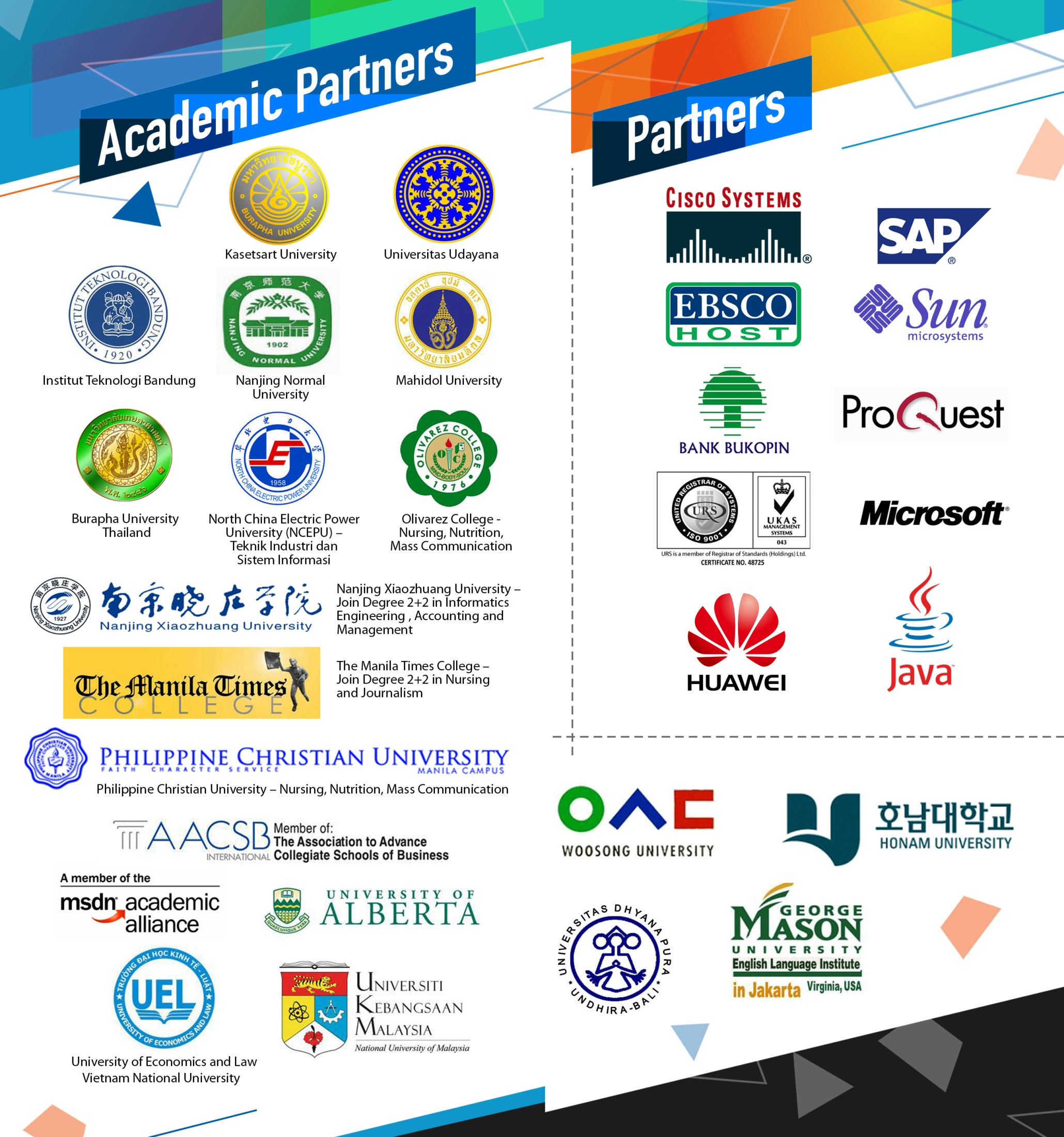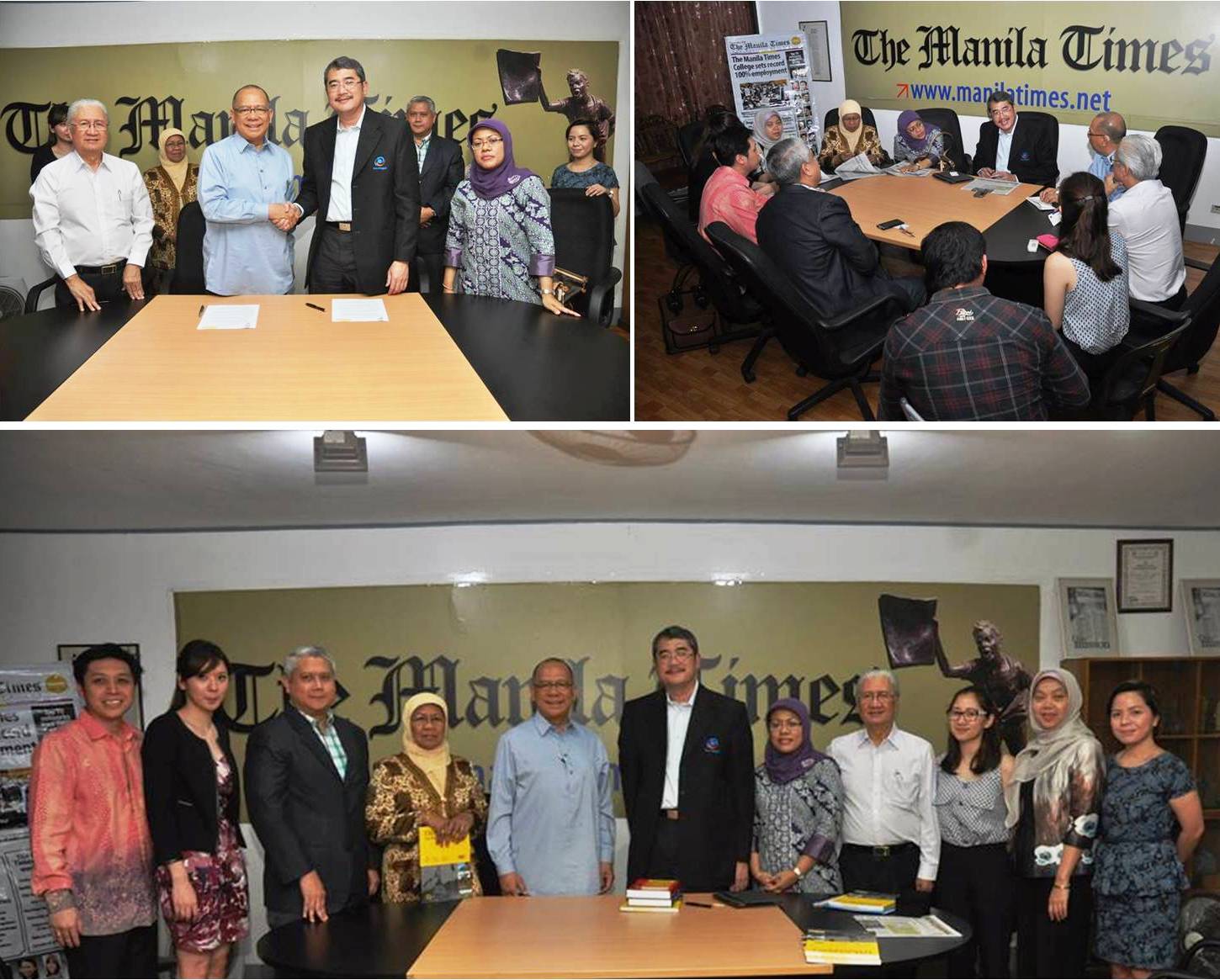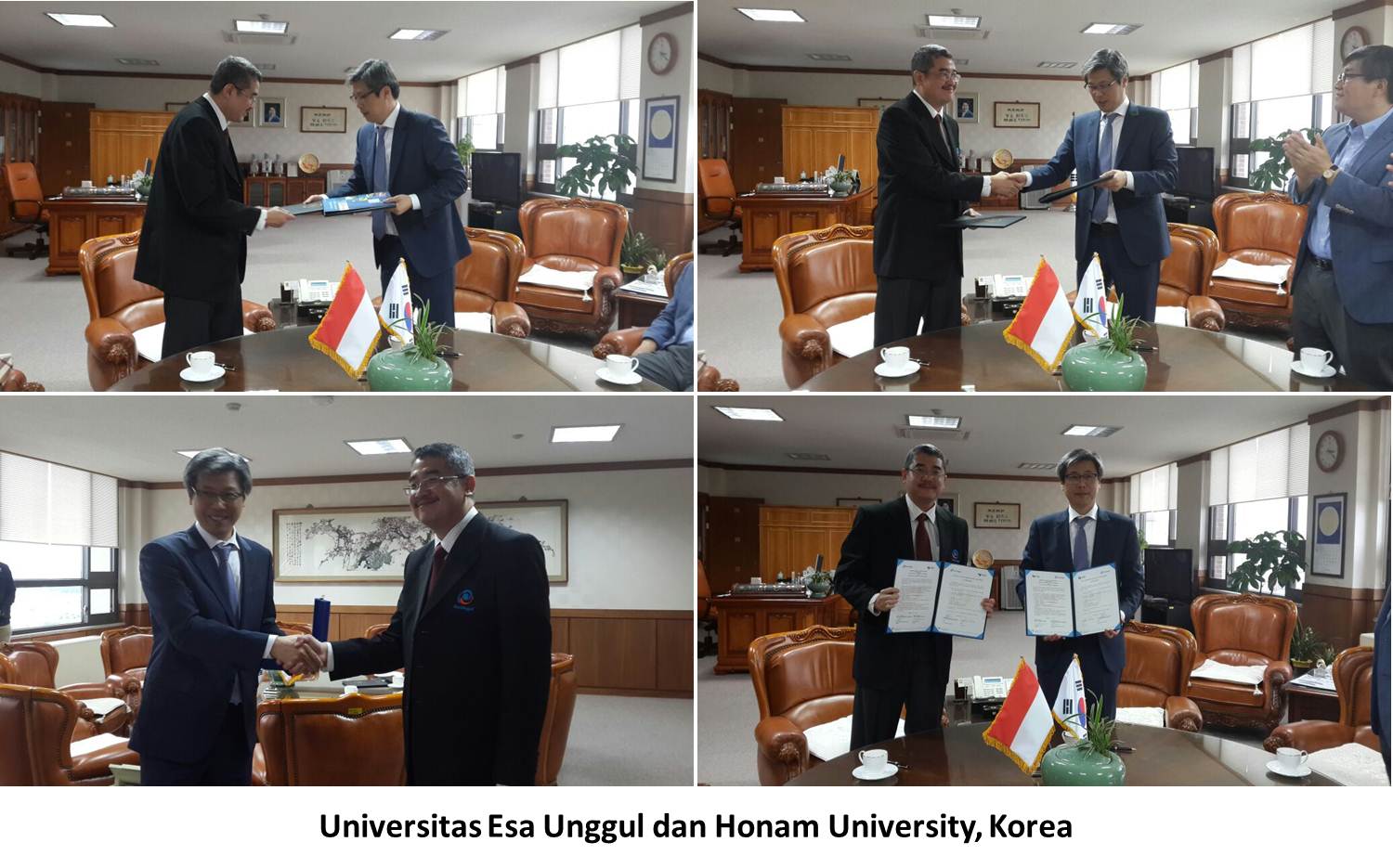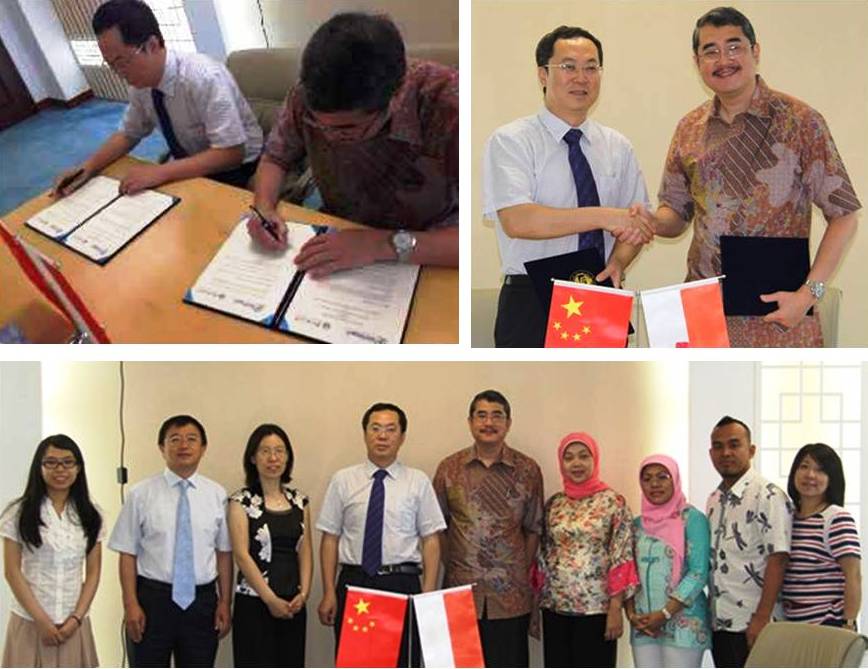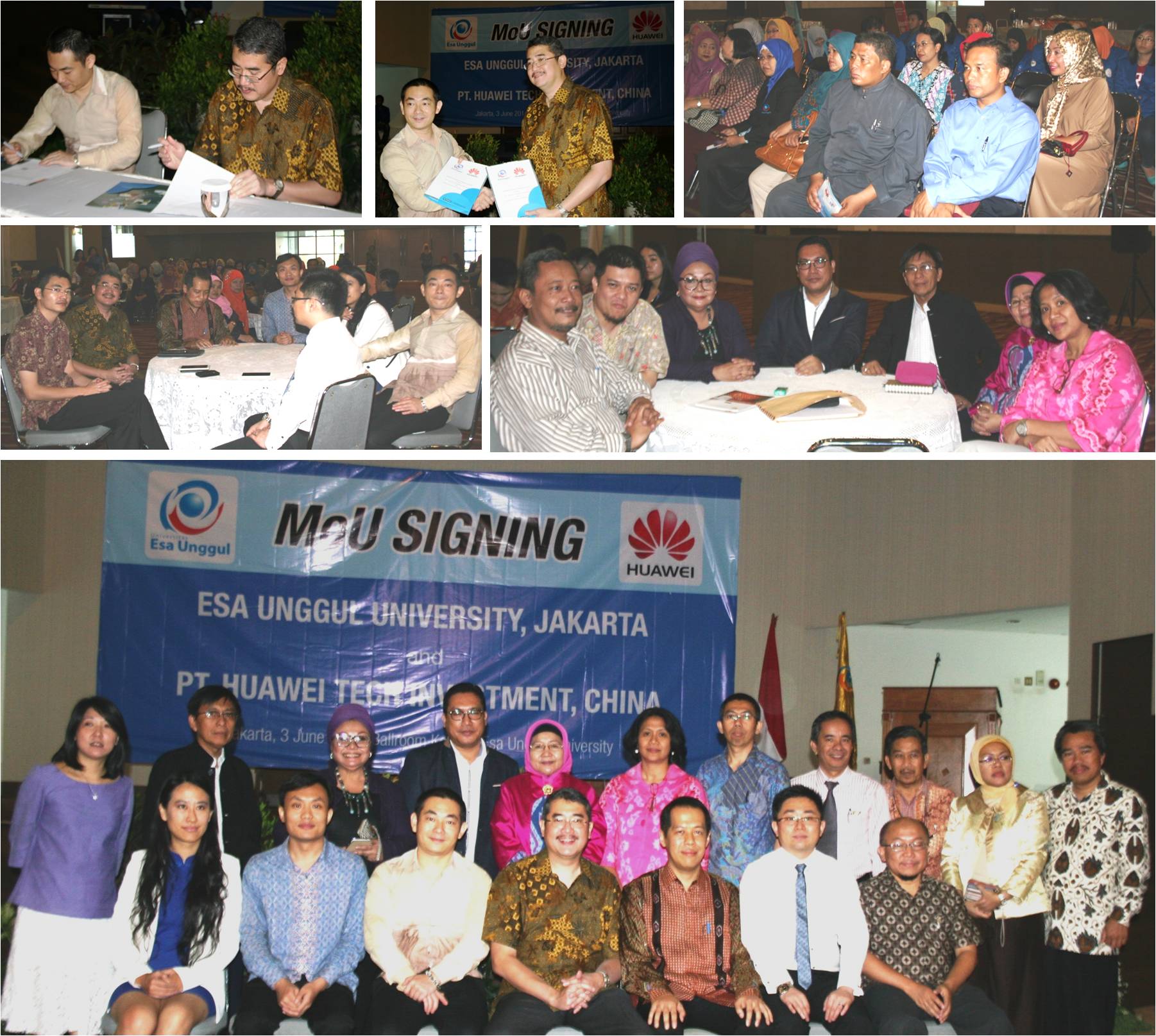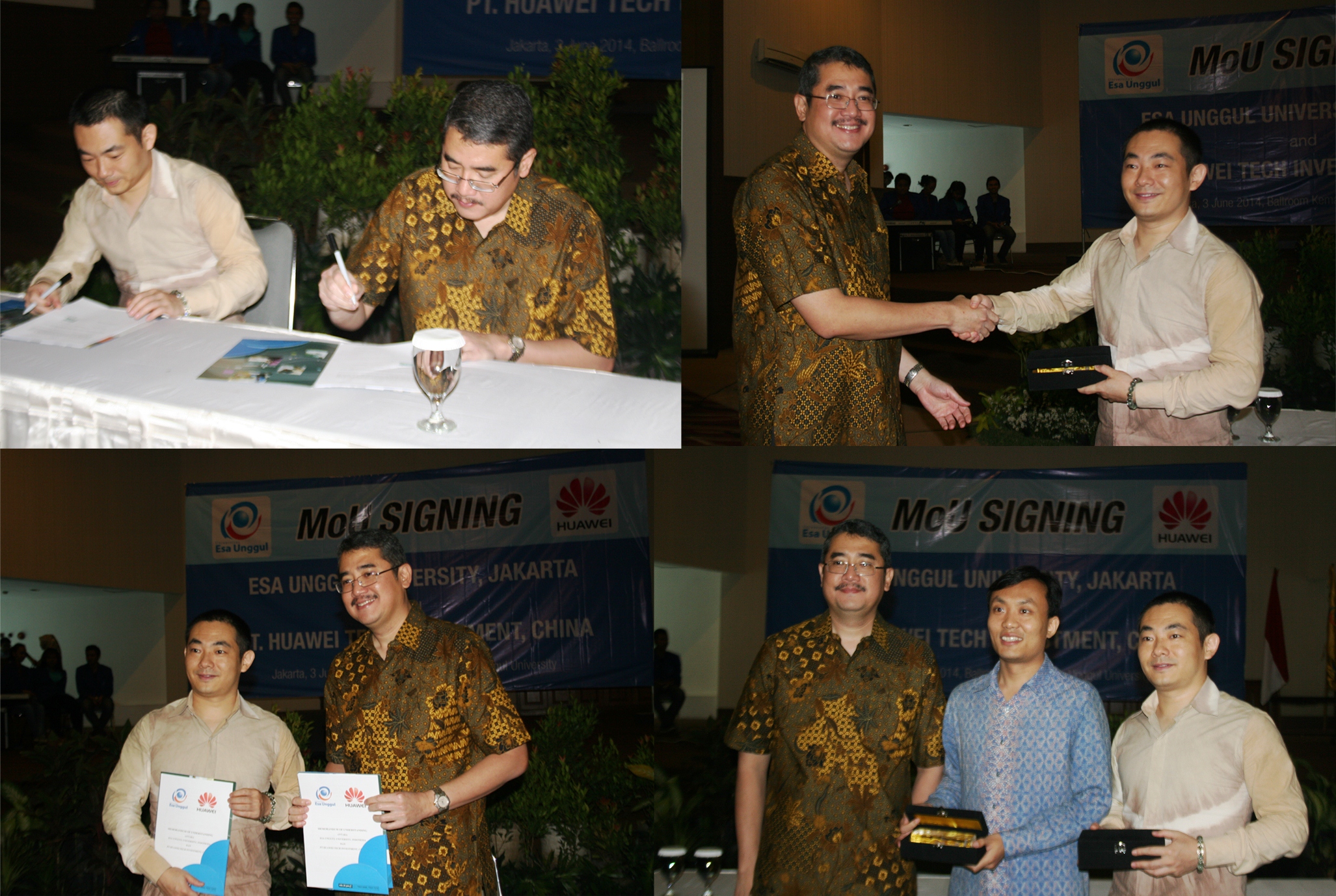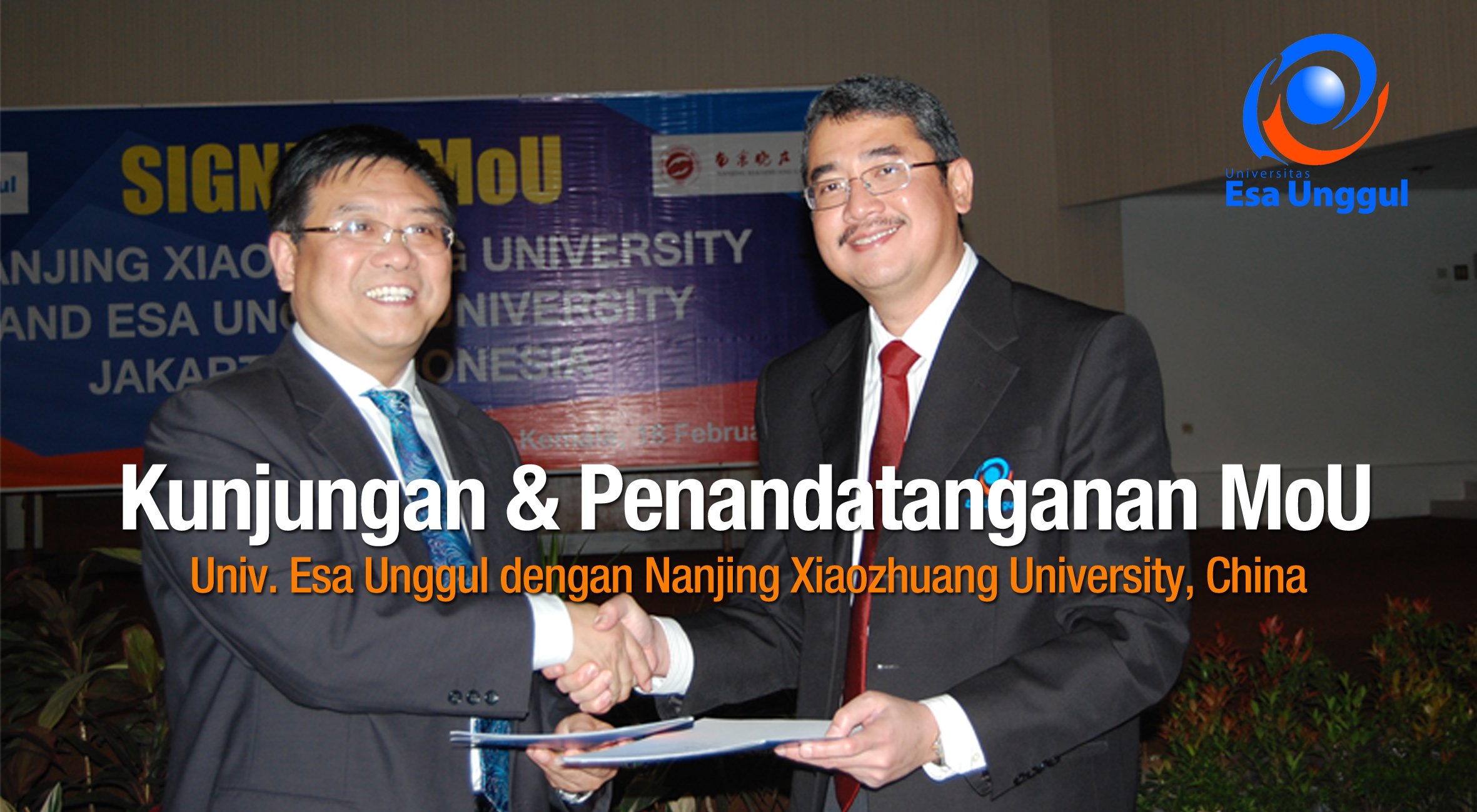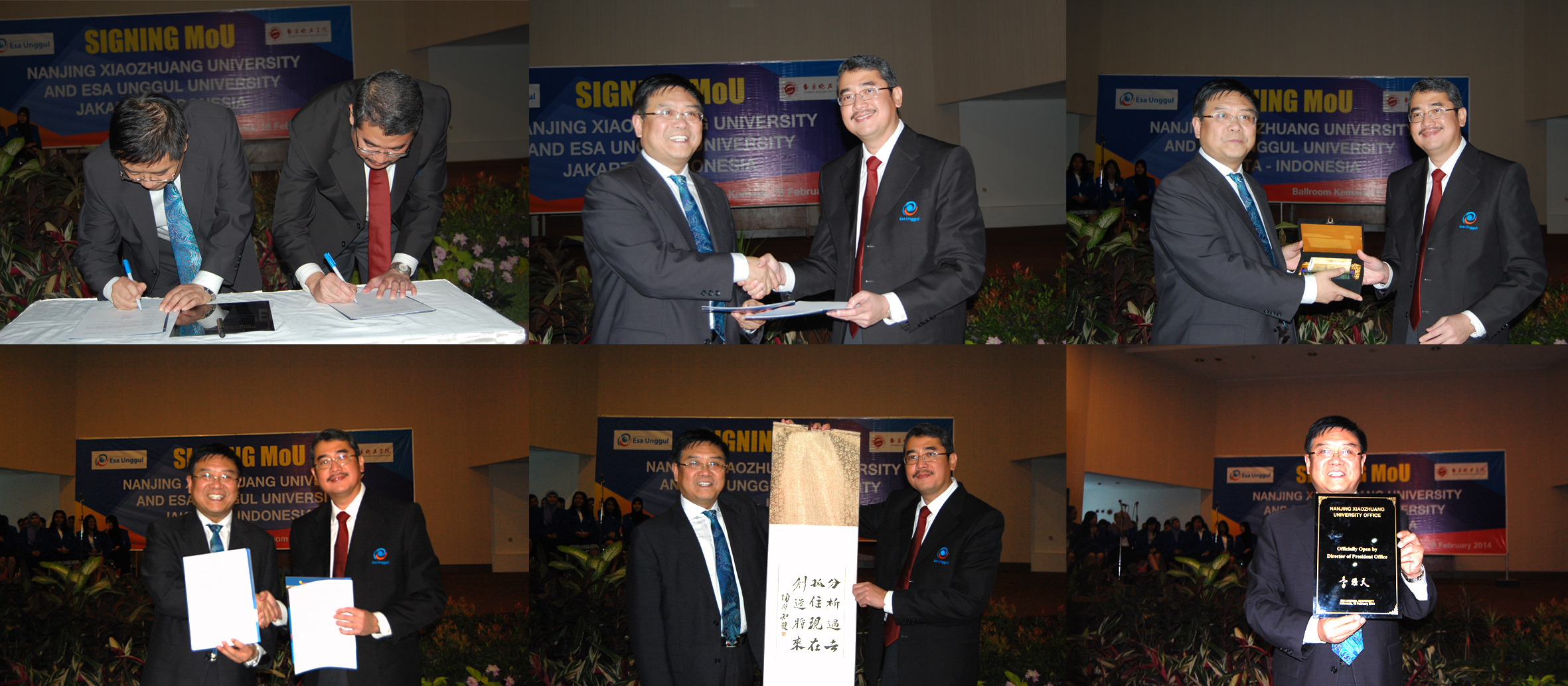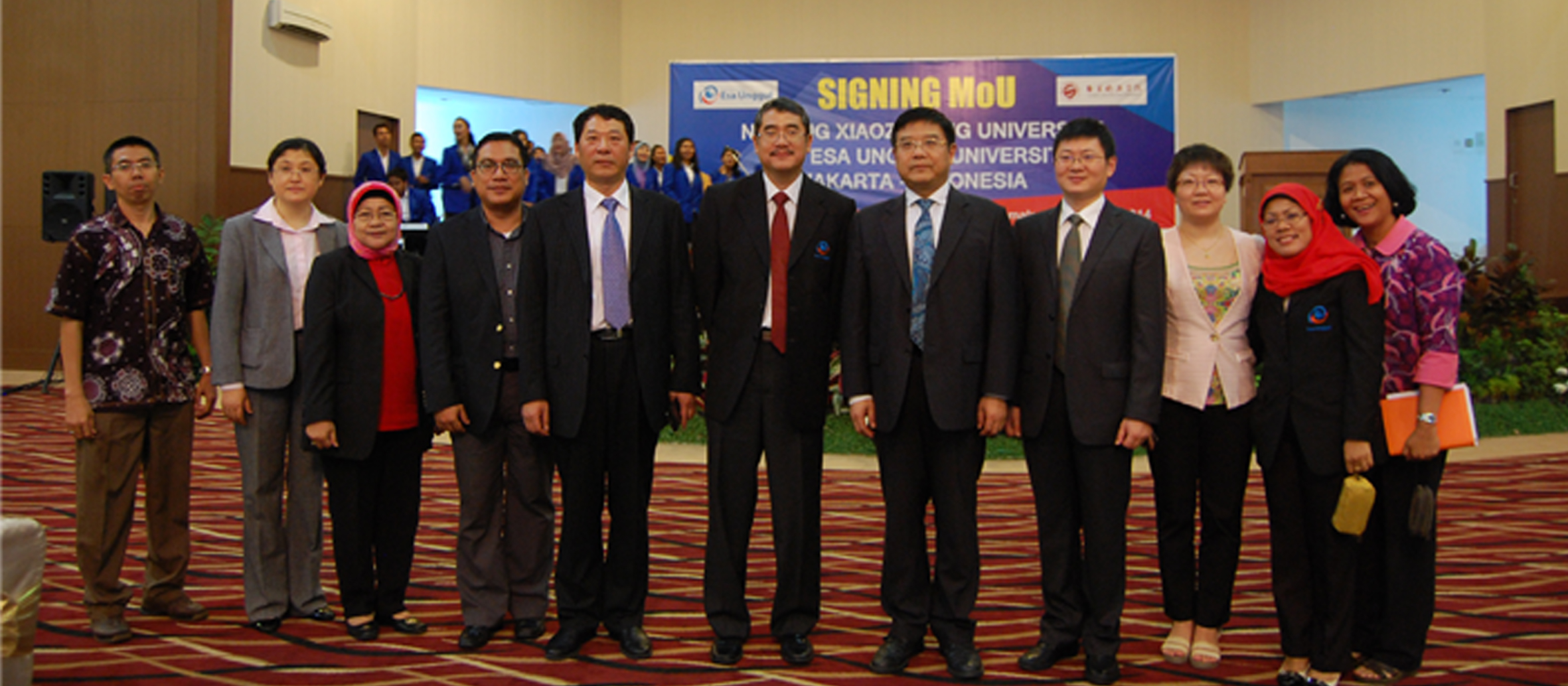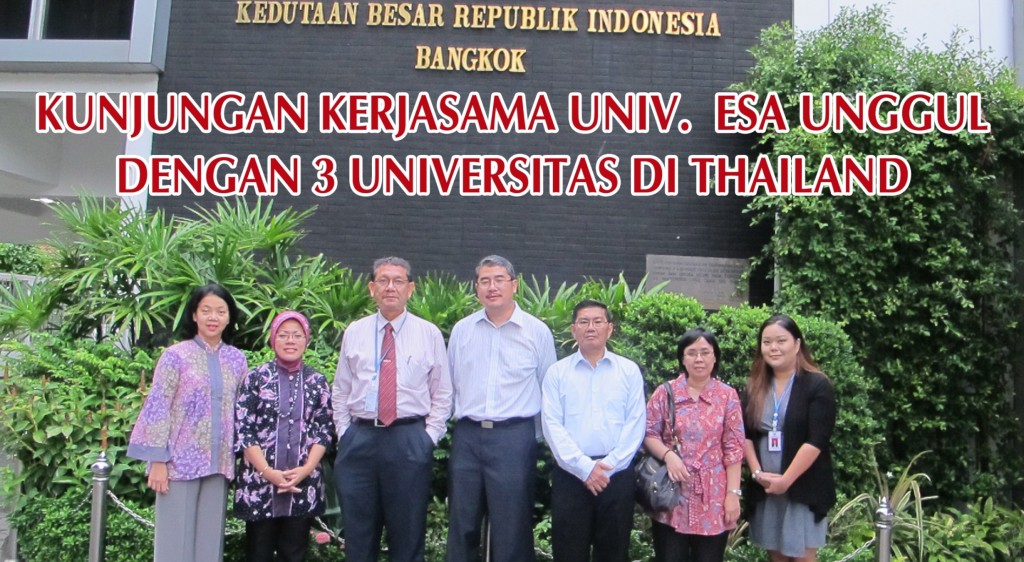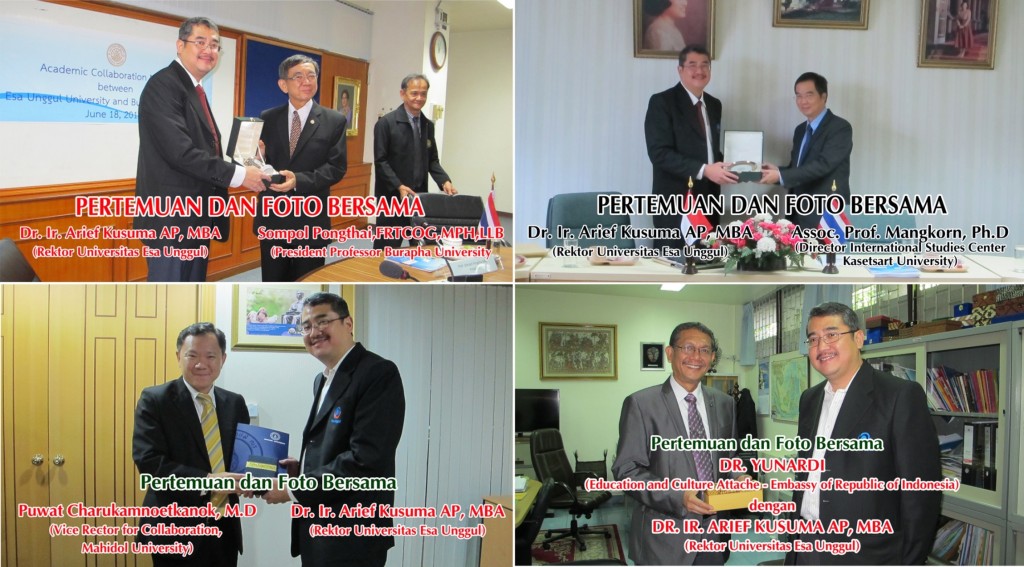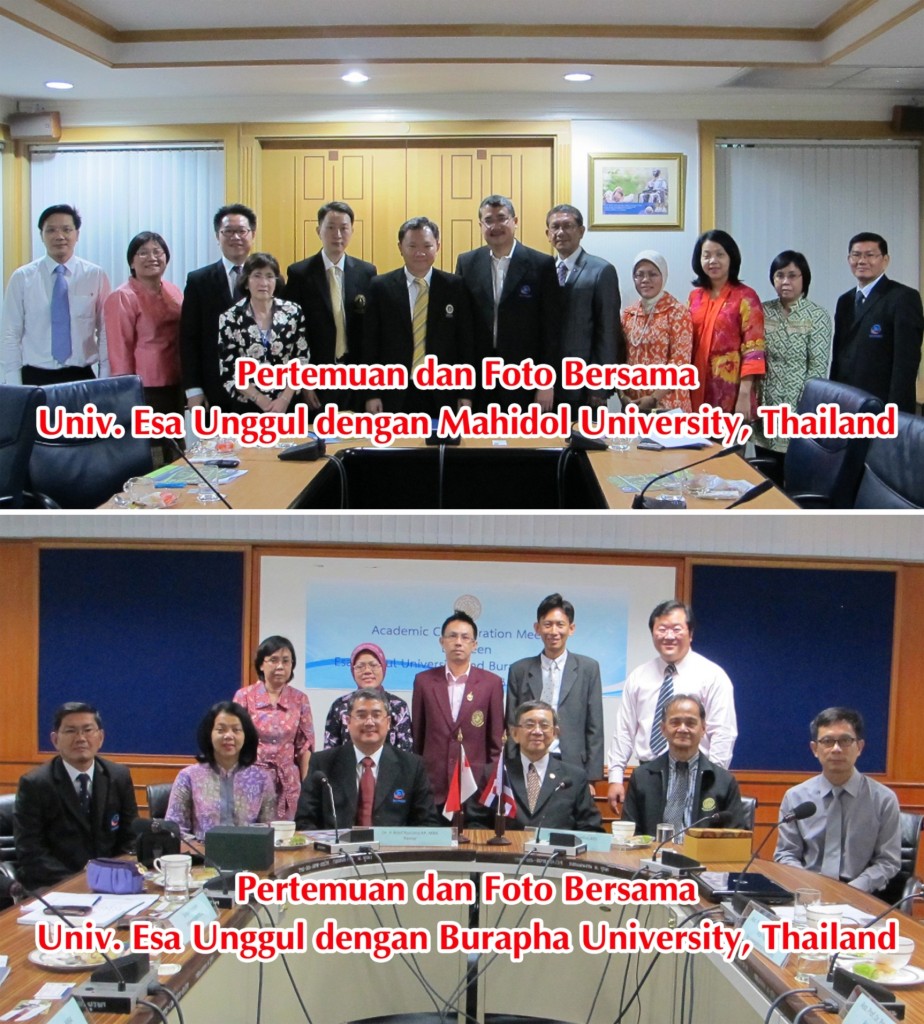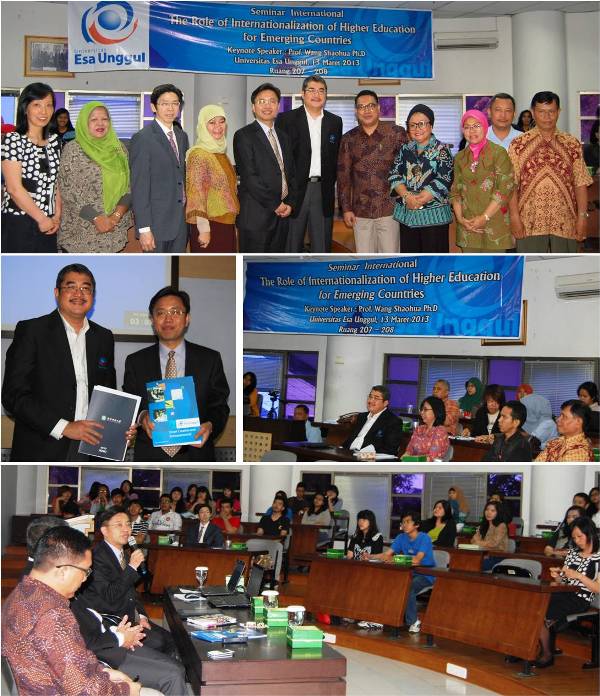———————————————————————–
The MoU Signing Between The Manila Times College with Esa Unggul University
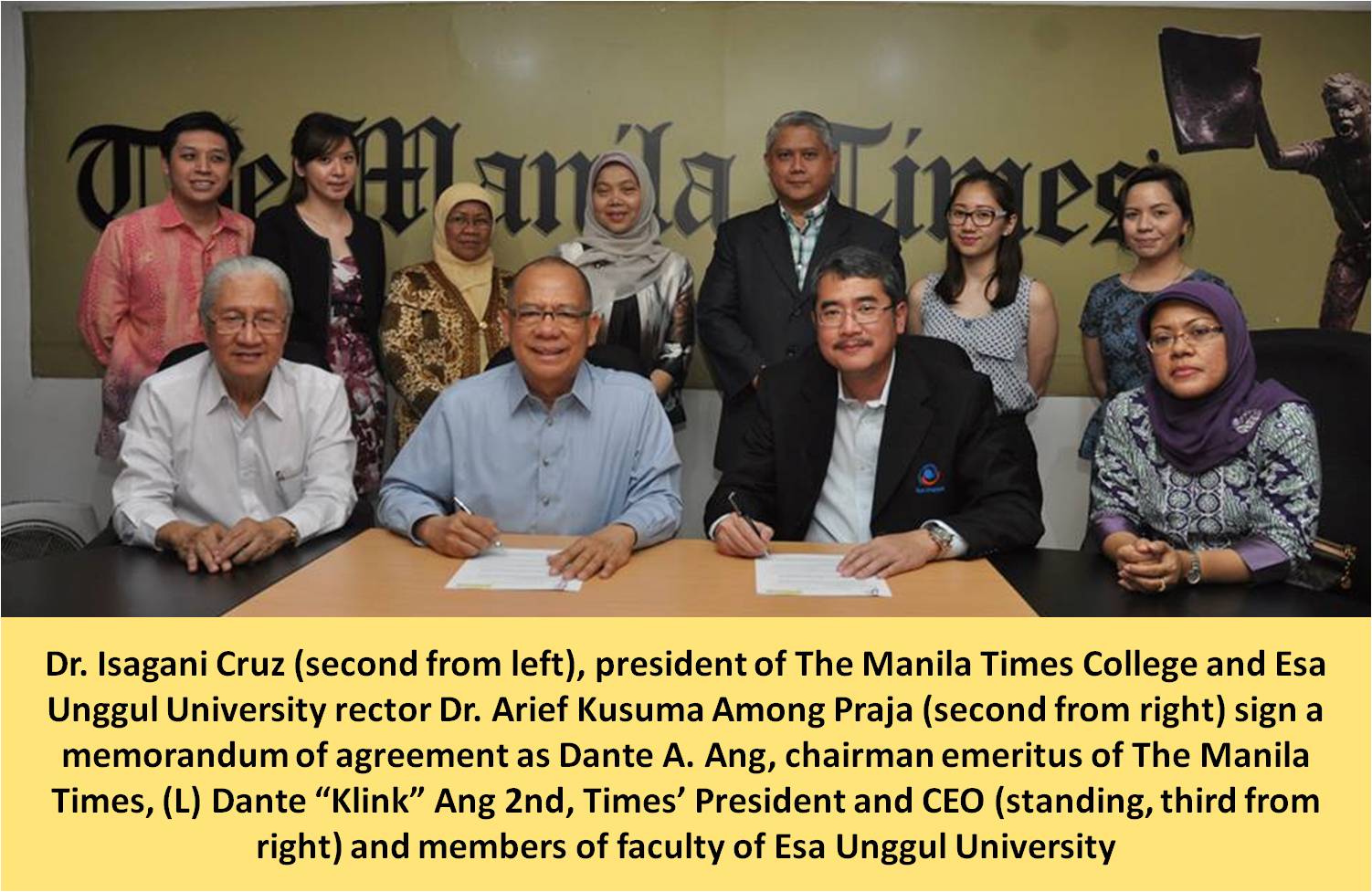
THE Manila Times College (TMTC) on Tuesday, 22nd April 2014 signed a memorandum of understanding (MOU) with the Esa Unggul University (EUU) in Indonesia for the international students exchange program (ISEP) and dual-degree program.
Under the agreement, EUU and TMTC will facilitate the exchange of faculty experts, researchers, academic personnel and students, of literature, research findings and other related publications and of a double-degree program; ensure credit transfer and mutual recognition of courses offered by both schools; encourage participation by faculty and students in each other’s educational congresses, conferences, workshops, symposiums, training courses and exhibits.
EUU Rector Dr. Arief Kusuma Among Praja said the partnership with the TMTC is a good opportunity for their students to experience and to learn the real world of journalism. “I know that the Philippines is producing a lot of professionals around the world and we want to learn from the Philippines,” Dr. Praja added. “I think it’s a good opportunity to have a partner in a real industry. This partnership is very significant because this will help enhance our experience in collaborating with other institutions and we want our students to have an international experience,” the EUU rector said. He added that their students will have a good career path in studying journalism at the TMTC under the dual-degree program. “Hopefully, they can have a good job after graduating from The Manila Times College. This is a good break to study journalism in the Philippines. I think the Philippines is a very democratic country in which journalistic practice is free and we can learn more about it from the Philippines,” Dr. Praja said.
Under the program, communication students from EUU will take up a journalism course at the TMTC and will undergo hands-on training as they will be assigned to various beats. Dr. Praja said more students will be given the opportunity to study abroad with the integration by 2015 of the Association of Southeast Asian Nations (Asean). “I think the Asean 2015 is a good opportunity especially that our market is becoming larger. We have to share the same market because not all Indonesians have the opportunity to study in higher education programs and to study abroad,” he added.
The Asean Economic Community aims to bring together the Asean member-nations into a single market that is able to compete in the global economy by 2015. Asean groups Brunei Darussalam, Burma (Myanmar), Cambodia, Indonesia, Laos, Malaysia, the Philippines, Singapore, Thailand and Vietnam, plus two observers Timor-Leste and Papua New Guinea.
Recently, top Philippine universities such as De La Salle University, University of Santo
Tomas, Ateneo de Manila University and University of the Philippines announced that they will be changing their calendars as part of an “internationalization effort,” noting that the Philippines is the only remaining Asean member-country with a June-to-March academic year.
In 2012, the TMTC also tied up with the Thammasat University in Thailand for an academic and cross-cultural learning partnership. Thammasat University is the first higher educational institution in Thailand to offer a bachelor’s degree in journalism. This program offers courses in newspaper and print media, radio and television, film, advertising, public relations and mass-communication management.
source:
http://www.manilatimes.net/the-manila-times-college-signs-deal-with-indonesias-esa-unggul-university/91170/
———————————————————————–
Kunjungan Kerjasama antara Universitas Esa Unggul dengan Woosong University dan Honam University, Korea
Dalam rangka penjajakan kerjasama dengan Woosong University dan Honam University, Korea, Universitas Esa Unggul melakukan kunjungan ke Korea pada 22 – 26 September 2014 lalu. Selama kunjungan tersebut, banyak hal dapat dipelajari terutama dari segi manajemen perguruan tinggi dan proses belajar-mengajar yang diterapkan di Korea. Di Woosong University yang terletak di kota Daejon penataan universitasnya cukup asri dan kesibukan para mahasiswanya yang nampak disiplin, hal tersebut nampak dari beberapa mahasiswa yang sedang berdiskusi.
Sementara di Honam University yang terletak di kota Guang Ju yang termasuk Universitas terkenal di Korea, melakukan kerjasama intensif terutama untuk jurusan Physiotherapy, Industrial Design, Broadcasting yang diharapkan berkembang pesat, mengingat banyaknya minat para mahasiswa Indonesia dibidang tersebut.
———————————————————————–
Penandatanganan Kerjasama Universitas Esa Unggul dengan North China Electric Power University, China
Dalam rangka kerjasama antara Universitas Esa Unggul (UEU) dengan North China Electric Power (NCEPU) China, Dr. Ir. Arief Kusuma, MBA (Rektor UEU), Dr. Suryanti T. Arief, MBA (Sekretaris Yayasan), Ari Pambudi, S.Kom, M.Kom (Wakil Rektor III), Dra. Suryari Purnama, MM (Wakil Rektor IV) pada 09 – 14 Juni 2014 melakukan kunjungan kerjasama ke NCEPU, China. Kerjasama bidang pendidikan ini meliputi Program Double Degree, Program Studi Teknik Industri UEU dengan Mechanical Engineering NCEPU dan Program Studi Sistem Informasi dengan Management Information System NCEPU. Selain itu kerjasama dalam student exchange, research and development.
Agenda kegiatan lainnya adalah mengunjungi pabrik HUAWEI TECH, China. PT. Huawei Tech Investment pada awal Juni 2014 lalu telah melakukan penandatanganan kerjasama dalam bidang pengembangan teknologi dan investasi yang bertempat di Ballroom Kemala, Kampus Esa Unggul. Kedua pihak sepakat untuk membangun “Smart Education” di lingkungan Universitas Esa Unggul.
———————————————————————–
Penandatanganan MoU Antara Universitas Esa Unggul dan PT. Huawei Tech Investment, China
Dalam rangka menjalin kerjasama berkesinambungan antara PT. Huawei Tech Investment dan Universitas Esa Unggul dibidang Industry Teknologi, pada tanggal 3 Juni 2014 diadakan penandatanganan Memorandum of Understanding antara Universitas Esa Unggul dengan perusahaan PT. Huawei Tech Investement yang dilaksanakan di Ballroom Kemala, Kampus Esa Unggul.
Rektor Universitas Esa Unggul Dr. Arief Kusuma, Ir, MBA dalam perjanjian kerja sama itu, nantinya diharapkan agar juga berlanjut pada kerjasama dibidang tenaga terdidik yang belajar di UEU untuk dapat kesempatan magang di perusahaan PT Huawei Tech Investment di beberapa negara untuk menciptakan tenaga terampil dibidang teknologi investasi dan membangun pusat pelatihan dan pengembangan teknologi dan investasi di Universitas Esa Unggul.
———————————————————————–
Kunjungan dan Penandatanganan MoU antara Universitas Esa Unggul dengan Nanjing Xiaozhuang University, China
Nanjing Xiaozhuang University, China pada 18 Februari 2014 lalu melakukan kunjungan dan penandatanganan Memorandum of Understanding (MoU) dengan Universitas Esa Unggul yang meliputi kerjasama pengembangan belajar mengajar dan pertukaran mahasiswa. Acara ini dihadiri oleh Rektor Universitas Esa Unggul, Dr. Ir. Arief Kusuma AP, MBA, dan Para Wakil Rektor, Para Dekan Fakultas dan Civitas Akademika Universitas Esa Unggul.
Delegasi dari Nanjing Xiaozhuang University adalah :
- Mr. Li Hong Tian – Secretary of Party Committee
- Mr. Cui Hua Yu – Director of President Office
- Mrs. Liu Ke Jian – Deputy Dean of School of Economics and Management
- Mrs. Wang Jing Ping – Director of Int’l Exchange Office and School for Int’l Student.
———————————————————————–
Kunjungan Kerjasama Universitas Esa Unggul dengan 3 Universitas di Thailand – Mahidol University, Burapha University dan Kasetsart University
Dalam rangka pengembangan dan peningkatan kerjasama dalam bidang pendidikan tinggi, khususnya dalam Program Studi Perencanaan Wilayah & Kota dan Teknik Industri serta Ilmu – ilmu Kesehatan, Universitas Esa Unggul melakukan Kunjungan Kerjasama ke 3 Universitas di Thailand pada 16 – 20 Juni 2013 lalu.
Delegasi Universitas Esa Unggul terdiri dari :
- Dr. Ir. Arief Kusuma AP, MBA (Rector)
- Dr. Suryanti T. Arief , SH, MBA (Secretary of Esa Unggul Foundation)
- Dra. Suryari Purnama, MM (International Office)
- Dr. Lily Amelia (Dean of Faculty of Engineering)
- Dr. Idrus Jus’at (Dean of Faculty of Public Health)
Universitas yang dikunjungi adalah :
- Mahidol University, Bangkok, Thailand
- Burapha University, Chonburi Province, Thailand
- Kasetsart University, Bangkok, Thailand
Kunjungan kerjasama Universitas Esa Unggul dengan 3 universitas ini menghasilkan beberapa kerjasama, antara lain :
Universitas Esa Unggul dengan Mahidol University ( Fakultas Teknik dan Fakultas Ilmu Kesehatan)
- Exchange Student
- Review Curriculum
- Exchange Faculty Member
Universitas Esa Unggul dengan Burapha University ( Fakultas Ilmu Kesehatan)
- Transfer Credit selama 1 Semester untuk Program Studi Keperawatan (Nurse) dan Kesehatan Masyarakat ( Public Health)
- Exchange Student
- Review Curriculum
- Exchange Faculty Member
Universitas Esa Unggul dengan Kasetsart University ( Fakultas Teknik)
- Kerjasama dibidang kurikulum dan penelitian
———————————————————————–
Kunjungan Kerjasama dan Penandatanganan MoU Nanjing Normal University – Universitas Esa Unggul
Dalam rangka kerjasama dalam bidang Pendidikan Tinggi, Universitas Nanjing Normal University, China menandatangani kerjasama (MoU) dengan Universitas Esa Unggul pada 13 Maret 2013 lalu di Kampus Esa Unggul. Fakultas Ekonomi menjadi program awal kerjasama pendidikan ini. Dari Fakultas Ekonomi UEU selaku Dekan, Dr. MF. Arrozi Adhikara, SE, Ak.M.Si dan Prof. Wang Shaohua, Ph.D dari Nanjing Normal University, China yang menandatangani MoU disaksikan oleh Rektor UEU, Dr. Ir. Arief Kusuma, MBA beserta jajaran pejabat civitas akademika UEU.
Kemudian acara dilanjutkan dengan Seminar the Role of Internalization of Higher Education for Emerging Countries yang dibawakan oleh Prof. Wang Shaohua, Ph.D tentang masalah Pendidikan kedua Negara yang hamper sama dari segi pengembangan kurikulum yang terus disempurnakan guna menghasilkan sumber daya manusia yang siap pakai di berbagai bidang kehidupan.
Harapan Rektor UEU lebih menekankan pada teknis pengajaran yang lebih komprehensif guna menghasilkan mahasiswa yang memiliki karakter kebangsaan. Baik UEU maupun NNU sepakat akan mengadakan program pertukaran pelajar (student exchange) antara kedua negera akan segera dilaksanakan.
———————————————————————–
Penandatanganan MoU Kerjasama Pendidikan dan Penelitian Universitas Esa Unggul dengan ITB Bandung
Universitas Esa Unggul melakukan kerja sama pendidikan dan penelitian dengan Institut Teknologi Bandung (ITB).
Kerjasama itu ditandai dengan penandatanganan memorandum of understanding (MoU) oleh masing-masing rektor di kedua universitas tersebut.
Rektor Universitas Esa Unggul, Dr. Ir. Arief Kusuma AP, MBA mengatakan, kerja sama ini merupakan langkah besar dan strategis bagi pengembangan keilmuan dan penelitian di kampusnya
“ITB adalah salah satu pusat pengembangan teknologi, ilmu pengetahuan, dan seni. Kampus yang membanggakan dan pelecut kami untuk lebih baik,” kata Dr. Ir. Arief Kusuma AP, MBA pada acara penandatanganan Mou, di ITB, Bandung, Jawa Barat, Rabu (18/7/2012).
Ia menjelaskan, kerjasama ini melibatkan Fakultas Desain dan Industri Kreatif, Serta Fakultas Teknik yang nantinya akan dilaksanakan sejalan dengan tridharma perguruan tinggi, pendidikan, penelitian, dan pengabdian masyarakat.
Selain itu, kerjasama ini juga mengagendakan pembinaan program studi. “Pertukaran keilmuan tentu masuk dalam agenda, dan ke depannya ITB akan membina salah satu program studi di kampuis kita,” jelasnya.
Dalam kesempatan sama, Rektor ITB, Akhmaloka mengungkapkan, kerja sama ini akan dijadikan salah satu cara untuk melengkapi sumber keilmuan di ITB.
Diakuinya, dalam kerja sama ini sangat besar kemungkinan pihaknya akan menemukan hal baru yang sebelumnya tidak miliki.
“Dengan membuat program bersama diharapkan hasilnya akan lebih baik dibandingkan dikerjakan sendiri. Semoga kerja sama ini memberikan banyak manfaat di kemudian hari,” pungkasnya.
Sumber
http://edukasi.kompas.com
———————————————————————–
Kerjasama MUST & UEU
University of Science & Technology, Malaysia dan Universitas Esa Unggul pada Rabu, 23 Juni 2010 melaksanakan pertemuan dalam rangka penjajagan peluang kerjasama dalam Joint Research, Joint Seminar, Student Exchange, dan International Programme. Hadir wakil dari University of Science & Technology (MUST), Malaysia antara lain, Mr. Badly Shah Bin Ariff Shah (Vice President of Corporate Affairs), Prof. Dr. P Sellapan (Professor of Information Technology), Hj. Kamal Abd. Razak, MBA (Senior Lecturer Business & Management Program). Sedangkan dari pihak Universitas Esa Unggul dihadiri oleh Rektor, Wakil Rektor, dan para Dekan Fakultas.
MUST didirikan pada tahun 2000 bekerjasama dengan Massachusset Institute of Technology (MIT), AS. MUST menyelenggarakan program-program S1 dan Master dalam bidang Teknik dan Manajemen seperti:
Material Science and Engineering with Business Management, Supply Chain Management, Transportation & Logistics, Information Technology, Industrial Biotechnology, Environmental Science, dan Energy & Environment. Sebagai tindak lanjut dari pertemuan ini, akan segera disusun MoU dan menjadwalkan kembali pertemuan berikutnya. Diharapkan melalui Kerjasama ini akan memajukan Tri Dharma Perguruan Tinggi, Pendidikan Pengajaran, Penelitian dan Pengabdian Masyarakat.
